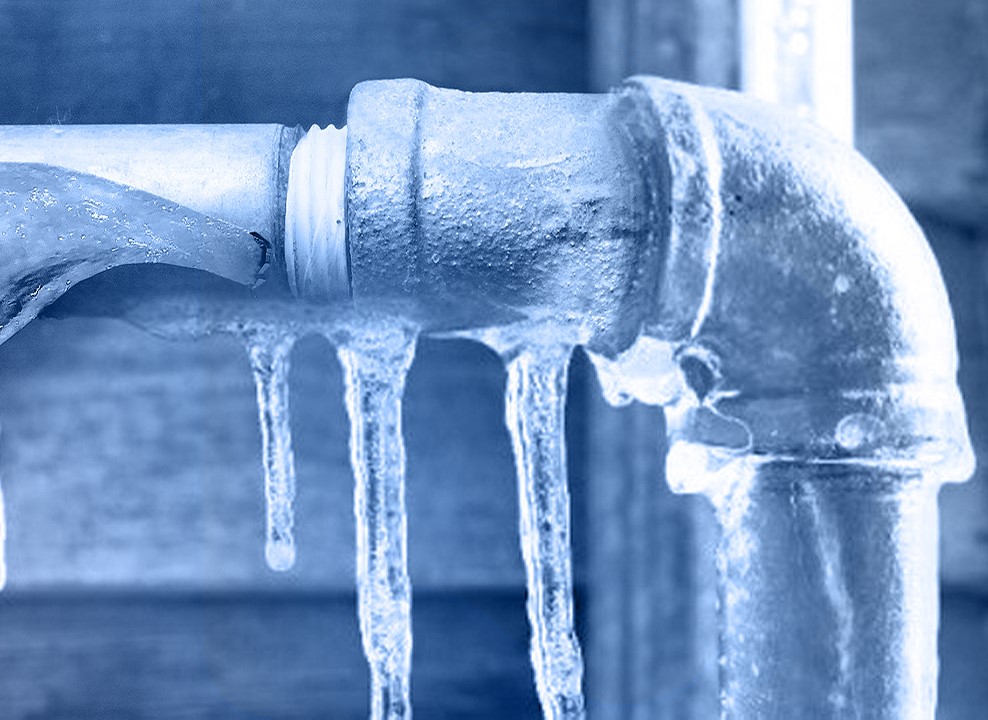This article in the next paragraphs involving How To Avoid Freezing Pipes is definitely engaging. Don't miss it.

Cold weather can damage your pipes, especially by freezing pipelines. Below's just how to stop it from taking place and what to do if it does.
Introduction
As temperature levels drop, the threat of icy pipelines rises, possibly resulting in pricey fixings and water damages. Understanding exactly how to avoid frozen pipes is crucial for house owners in cool environments.
Understanding Icy Pipelines
What causes pipelines to freeze?
Pipes ice up when exposed to temperatures below 32 ° F (0 ° C) for extended durations. As water inside the pipes ices up, it increases, taxing the pipeline walls and possibly triggering them to break.
Dangers and damages
Icy pipes can lead to water system disturbances, property damages, and pricey repair work. Ruptured pipes can flood homes and trigger comprehensive structural damage.
Indicators of Frozen Water Lines
Identifying icy pipelines early can avoid them from breaking.
Just how to recognize frozen pipelines
Search for decreased water circulation from faucets, unusual smells or sounds from pipes, and noticeable frost on exposed pipelines.
Avoidance Tips
Shielding susceptible pipes
Cover pipelines in insulation sleeves or utilize heat tape to secure them from freezing temperatures. Concentrate on pipelines in unheated or external locations of the home.
Heating techniques
Maintain indoor rooms appropriately heated up, particularly locations with pipes. Open up cupboard doors to enable warm air to distribute around pipes under sinks.
Protecting Exterior Pipes
Yard hose pipes and outside taps
Detach and drain garden hoses prior to winter. Install frost-proof spigots or cover outdoor taps with shielded caps.
What to Do If Your Pipelines Freeze
Immediate activities to take
If you believe frozen pipelines, maintain faucets open up to relieve stress as the ice thaws. Make use of a hairdryer or towels soaked in hot water to thaw pipelines slowly.
Long-Term Solutions
Architectural changes
Consider rerouting pipes away from outside wall surfaces or unheated areas. Include additional insulation to attic rooms, basements, and crawl spaces.
Updating insulation
Invest in top quality insulation for pipes, attics, and wall surfaces. Appropriate insulation helps maintain regular temperature levels and lowers the danger of icy pipes.
Conclusion
Stopping icy pipes needs proactive actions and quick feedbacks. By comprehending the reasons, indicators, and preventive measures, homeowners can protect their plumbing throughout cold weather.
6 Proven Ways to Prevent Frozen Pipes and Protect Your Home
Disconnect and Drain Garden Hoses
Before winter arrives, start by disconnecting your garden hoses and draining any remaining water. Close the shut-off valves that supply outdoor hose bibs and leave the outdoor faucet open to allow any residual water to drain. For extra protection, consider using faucet covers throughout the colder months. It’s also important to drain water from any sprinkler supply lines following the manufacturer’s directions.
Insulate Exposed Pipes
Insulating your pipes is an effective way to prevent freezing. Pipe insulation is readily available at home improvement stores and is relatively inexpensive. Pay close attention to pipes in unheated areas such as the attic, basement, crawl spaces, or garage. Apply foam insulation generously to create a buffer against the cold. You can also wrap your pipes in heat tape or thermostat-controlled heat cables for added warmth.
Seal Air Leaks
Inspect your home for any cracks or openings that could let in cold air. Seal any holes around the piping in interior or exterior walls, as well as the sill plates where your home rests on its foundation. Additionally, make sure to keep your garage door closed unless you’re entering or exiting. Leaving it open creates a significant air leak that can lead to frozen pipes.
Allow Warm Air Circulation
During cold snaps, it’s essential to allow warm air to circulate evenly throughout your home. Leave interior doors ajar to promote better airflow. Open kitchen and bathroom cabinets to help distribute heat consistently around the rooms. If you have small children or pets, be sure to remove any household chemicals or potentially harmful cleaners from open cabinets for safety.
Let Faucets Drip
A small trickle of water can make a big difference in preventing ice formation inside your pipes. When temperatures drop significantly, start a drip of water from all faucets served by exposed pipes. This continuous flow helps prevent the water from freezing. Additionally, running a few faucets slightly can relieve pressure inside the pipes, reducing the chances of a rupture if the water inside does freeze.
https://choateshvac.com/6-proven-ways-to-prevent-frozen-pipes-and-protect-your-home/

I stumbled upon that entry about Helpful Tips to Prevent Frozen Pipes this Winter when doing a search on the web. Those who enjoyed our article please make sure you remember to pass it around. Thanks for your time invested reading it.
Request Estimate